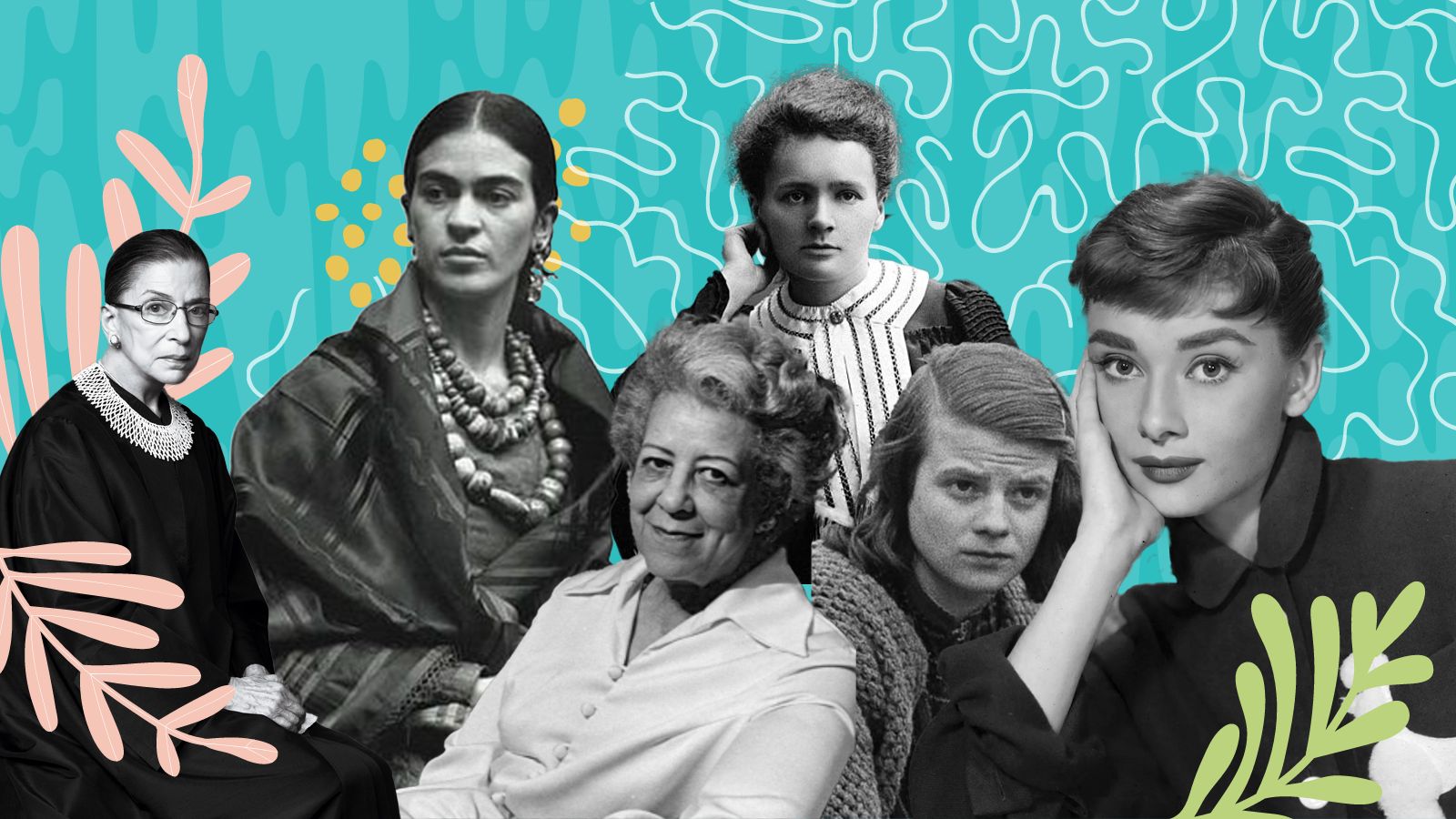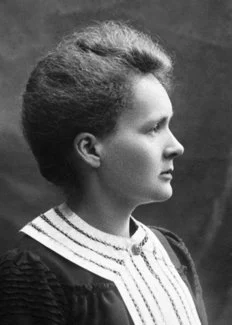We are well aware that we stand on the shoulders of the incredible women who came before us. Those who fought when they had no voice, fought against oppression, fought for the rights of others, and changed the world because of it. Women are still fighting today, but because these women made the sacrifices they did, we are able to fight in a much better world. So although women deserve a hell of a lot more than just a month, we wanted to take a moment during this Women’s History Month to honor them.
Helen Claytor
As far as trailblazers go, Grand Rapids is home to many of them. But we want to begin with Helen Claytor.
Helen became the first black woman president of any YWCA in the country when she became board president of the YWCA West Central Michigan. She was a fierce fighter for all women and argued that ending racism needed to be an integral part of their mission, or their efforts to address issues marginalizing all women would continue to fail. She became the board president of the National YWCA, where she was a leader in the campaign to adopt YWCA’s One Imperative, the first time the elimination of racism appeared in the organization’s mission.
Then, in the late 1940s, amid racial problems sweeping the country, Helen was appointed to a Grand Rapids committee to study its racial problems. The findings of that committee ended up leading to the formation of the city’s first Human Relations Commission, which became the Grand Rapids Office of Equal Opportunity.
A champion for women’s rights, civil rights, and so much more. Thank you, Helen, for everything you have given Grand Rapids and the world.
Frida Kahlo
True to her convictions. Frida was a symbol of a woman’s inner strength and all-around badassery. In her short 47 years in this world, she didn’t care what anyone thought of her. She was an icon for Mexicans, the feminist movement, and the LGBTQ+ community. She developed her own art style with Mexican folk culture. She did mostly self-portraits, but her work also explored questions about identity, gender, race, and sexuality. She embraced her true self in her femininity and masculinity. In her work, she would focus on those features by exaggerating her monobrow and mustache. She didn’t agree with society’s exasperation on how to be a woman. She was openly bisexual and would dress in men’s clothing now and then. This made her a trailblazer of gender nonconformity. During her life, she didn’t stand out, but today, she is celebrated by art historians and political activists as a true icon of female empowerment.
Sophie Scholl
The first documented activist to speak out against Hitler and his mass murder of the Jews in Germany was, in fact, a young woman.
In the midst of World War II, Sophie Scholl and her brother Hans began quietly distributing anti-Nazi leaflets, and from there, a small core group of resistance fighters known as the “White Roses” was born. Sophie, who was only 20 at the time, was often used to distract officials and helped the activist group distribute pamphlets documenting Hitler’s brutality unsuspiciously throughout the university. When speaking to her friend in a cafe about going against Hitler, Scholl said, “If the men don’t do it, a woman has to do it.”
Sophie, her brother, and their friend were eventually arrested at the university after being caught and sentenced to death. The story of Sophie and the White Roses is a testament to female activism in the face of adversity, and Sophie’s legacy is now recognized in Germany as an act of true courage.
Audrey Hepburn
You might think of Audrey Hepburn and think of the Hollywood starlit from Breakfast at Tiffany’s, but let’s not forget she was also a Dutch WWII resistance fighter.
While living in the Netherlands during WWII, Audrey joined the Dutch resistance movement early after seeing an illegal musical performance with her mother to raise money for the Dutch underground. After some encouragement from Dr. Visser’t Hooft, an organizer for the resistance, Hepburn offered her skill of ballet dancing to raise money during the underground shows known as zwarte avonden or “black evenings”. These evenings were always high-risk.
At one point, 15-year-old Audrey was asked to deliver messages and make contact with American paratroopers who had landed in the Dutch countryside since she was one of the few Dutch teenagers who could speak English. When she spotted the Nazis coming towards her, she picked up a handful of wildflowers, skipped over to them, and handed them the small bouquet. Her charm and pose was not diminished when faced with the hate of the Nazi regime.
Later in life, when asked about her involvement in the resistance, Hepburn recalls her mother’s role by saying, “Mum was more than a steel-butterfly; she was a battle-hardened badass,” but we think Audrey was pretty badass too.
Gráinne Ní Mháille
We’re going way back for this one, but Gráinne deserves it. In the days of Queen Elisabeth I, women weren’t allowed on ships. Like ever. And aside from the queen herself, women certainly weren’t allowed to rule. Well, suffice it to say Gráinne wasn’t about to take that sitting down.
Her dad was a powerful naval commander who married her to an equally powerful noble. But when Gráinne’s husband was killed, the killer decided to march on her home, expecting Gráinne to submit. She didn’t. She forced him to retreat. Eventually, she went on to command her late-father’s forces, rule the barony, and even become a pirate who struck fear into the hearts of sailors who passed through her waters.
When English rule started encroaching on Gráinne’s territory in Ireland, she was forced to surrender. Still, when she was brought before Queen Elizabeth, Gráinne wore her finest clothing. Legend has it that she sneezed, and Elizabeth handed her a handkerchief. When Gráinne was finished, she tossed it in the fire. Elizabeth was shocked and told her it was a fine item, to which Gráinne replied, “Oh. See, unlike you, we Irish don’t enjoy keeping our filth on our person.”
RBG
Ruth Bader Ginsburg. Need we say more? An icon both on and off the court. A trailblazer who fought brazenly for the rights of women and minorities. A fierce friend, mother, wife, and damn Supreme Court Justice. When we talk about badass–this is what we mean.
Not only did RBG rise to the highest court in the land, but she did it at a time when women just didn’t do that. Before pushing through the ranks, she attended Harvard Law School, where she was one of 9 women in a 500-person class. That’s where the men in her class would make fun of her, exclude her from using certain sections of the library, and ask her how she felt about taking a spot in the program from a man (this still makes our blood boil).
Where some would have backed down–RBG didn’t. Her passion drove her to the top, where she ended up being the second woman to serve on the Supreme Court, and the first Jewish woman to do it. It was there that she would lead the way in history-altering decisions, including the 1996 Virginia Military Institute case, which challenged the school’s all-male admissions policy. The court, led by Ginsburg, would require the state-funded school to accept women for admission.
This was just one of countless things she’s done for women, minorities, and the countless Americans who don’t have a voice. RBG, we salute you.
Marie Curie
Marie wasn’t the first woman to ever win a Nobel Prize twice, she was the first person ever to win the Nobel Prize twice. Oh, and still the only person, to this day, to have won the Nobel Prize in two scientific fields. This amazing woman discovered radium and polonium back in 1898. Her husband, who was more of an assistant, was credited for her work by the scientific community for a long time. Of course, we know better now. To his credit, he fought for her rightful recognition. Her discoveries led the way for radiology treatments for cancer. The number of lives that this discovery saved since 1903(after the first treatment) is incalculable.
After overcoming cancer in 1911, she opened a new research facility where she could contribute over 200 X-ray machines to the front lines after World War I broke out. These machines helped save over 1 million lives. Yeah, let that sink in. Marie Curie is the definition of a badass. Some of her notebooks are still so radioactive that they’re stored in lead boxes. It is very fitting that pieces of her legacy are literally untouchable.
Helen, Frida, Sophie, Audrey, Gráinne, Ruth, Marie – names that echo through history, embodying courage and strength that shaped our world. To these remarkable women, we express our deepest gratitude for their profound impact. May our efforts honor their legacy and inspire future generations.
















